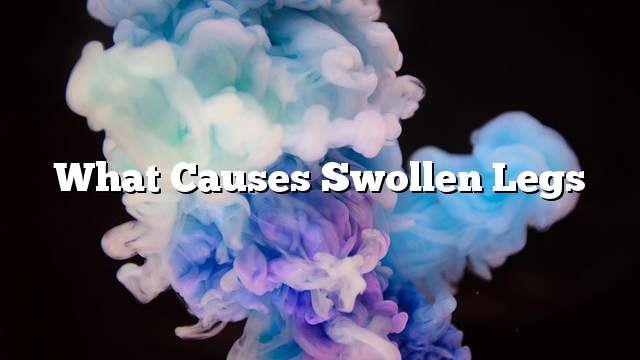Swelling of the legs
Swelling of the legs of the problems that affect the ability of the person to exercise the activities of daily life, increasing the sense of weight, and the inability to move, in addition to feeling pain, so require special care, and good care to alleviate symptoms, and the ability to work, and in this article we will know the reasons Swelling of the legs.
What Causes Swollen Legs
Venous insufficiency
Is a common disease among adults, which destroys the valves of the veins responsible for the rise of blood to the heart, which leads to the expansion of veins as a result of water absorption, the venous network becomes inflated, and weaken the ability to do work, resulting in the swelling of the legs.
Lymphatic edema
The result of the inability of the venous lymphatic system to empty the lymph node in the ankles, feet, and the cornea, leading to the expansion of veins, and the appearance of some bruises on the skin.
Lipid edema
Known as the analogue and gradual accumulation of subcutaneous fat due to water retention, this accumulation usually occurs in the thighs and hips, resulting in swelling of both feet and arms.
Causes of swollen legs
- Broken leg or ankle as a result of falling or receiving a blow, or ankle sprain, and others.
- Sensitivity.
- Rheumatoid Arthritis.
- Dermatitis, and surrounding connective tissue.
- Varicose veins.
- Stomach swelling due to congenital causes.
- Increase fluid in the lymphatic system.
- Kidney failure.
- Heart failure.
- Low levels of thyroid hormones.
- Anemia.
- Take some medications.
- Osteoporosis.
- Achilles tendon rupture.
- Gout.
- Anterior cruciate ligament injury in the knee.
- Obesity.
- Lack of exercise.
Diagnosis of swollen legs
Swelling of the legs is detected by the following means:
- Urine examination.
- Salt and kidney tests.
- Coagulation factors.
- X-ray, ultrasound and computed tomography.
- Electrophysiological planning of the heart.
- Sampling of the lymph node.
- Doppler examination.
Treatment of swollen legs
- Eat a healthy diet to get rid of excess weight.
- Reduce the amount of salt in the food and avoid salty foods.
- Avoid standing or sitting for long periods.
- Walk regularly and stretch the legs.
- Wear compression socks when you travel, or stand for long hours.
- Lift the legs above the heart level, for a third of an hour every few hours, to allow the gravity to move the fluid towards the heart.
- Exercising on a daily basis, such as swimming, cycling.
- Eat healthy foods.
- Manual lymphatic drainage, carried out by the physical therapist, especially in hot weather.
- Lymphatic mechanical discharge, through the use of useful techniques for blood circulation and lymphatic circulation.
- Surgery, through liposuction.
